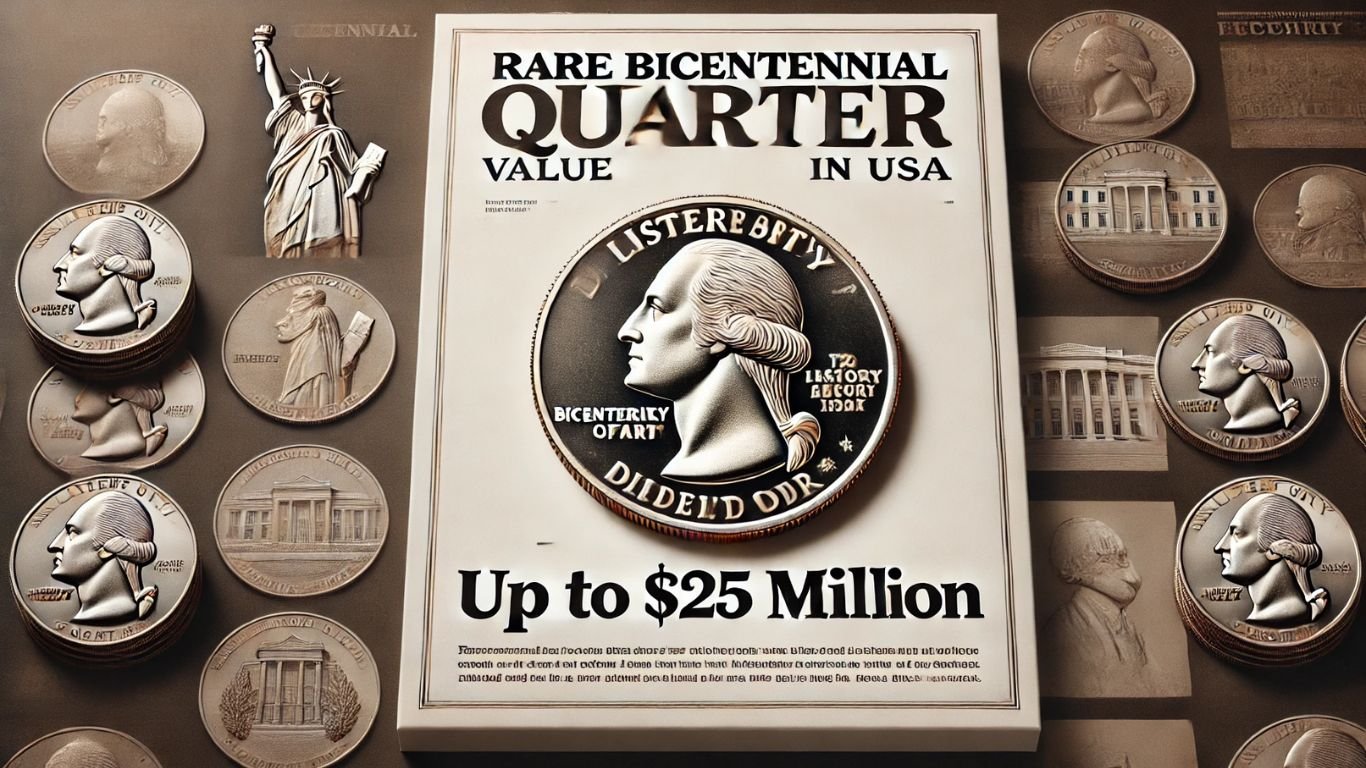The Bicentennial Quarter, minted in 1975 and 1976, is a distinctive coin that celebrates the United States’ 200th anniversary. With its unique design and historical significance, this coin holds a special place in American numismatics. While millions were produced, certain factors make specific Bicentennial Quarters valuable and sought after by collectors.
This guide delves into the history, design, value, and collectibility of the Bicentennial Quarter, providing insights for seasoned numismatists and beginners alike.
A Brief History of the Bicentennial Quarter
The Bicentennial Quarter was part of a commemorative series created to honor the 200th anniversary of the Declaration of Independence. Alongside redesigned half dollars and dollar coins, the Bicentennial Quarter was minted with a special reverse to mark the occasion. The production of these coins spanned two years, with both 1975 and 1976 quarters bearing the dual date “1776-1976.”
Design Features
Obverse:
- Features the classic portrait of George Washington by John Flanagan.
- The date “1776-1976” replaces the traditional single year, signifying the Bicentennial.
Reverse:
- Designed by Jack L. Ahr, the reverse depicts a Colonial drummer with a torch encircled by 13 stars, representing the original colonies.
- A departure from the traditional eagle design, this imagery reflects the Revolutionary War era and the spirit of independence.
Mint Marks and Variants
The Bicentennial Quarter was minted at three facilities:
- Philadelphia: No mint mark.
- Denver: “D” mint mark.
- San Francisco: “S” mint mark, including special proof and silver proof editions.
Coins from the San Francisco Mint, particularly silver proofs, are often more valuable due to their lower mintage and superior quality.
Value of Bicentennial Quarters
Although Bicentennial Quarters are generally common, their value depends on several factors, including condition, mint mark, and rarity.
Circulated Coins:
- Worth face value (25 cents) in average condition.
- Coins in better condition can sell for $1–$3.
Uncirculated Coins:
- Range from $1 to $5.
- Coins graded MS65 or higher can command higher premiums.
Silver Proof Quarters:
- Made of 90% silver, these coins are more collectible.
- Values typically range from $10 to $50, depending on condition.
Error Coins:
- Coins with double strikes, off-center designs, or other errors can be highly valuable.
- Prices for error Bicentennial Quarters vary but can reach hundreds or thousands of dollars, depending on the type and rarity of the error.
Factors Influencing Value
- Condition:
Coins are graded on a scale of 1 to 70, with higher grades indicating better preservation. Uncirculated coins or those with minimal wear are the most valuable. - Mint Mark:
Coins with the “S” mint mark, particularly silver proofs, are more desirable. - Rarity:
While most Bicentennial Quarters are common, error coins and high-grade specimens are rare and command higher prices. - Market Demand:
Collectors’ interest and market trends influence a coin’s value.
Collecting Bicentennial Quarters
For collectors, the Bicentennial Quarter represents an affordable yet historically significant entry point into numismatics.
Tips for Collectors:
- Educate Yourself:
Familiarize yourself with the coin’s history, mint marks, and variants. Understanding what makes a coin valuable is crucial for informed purchasing decisions. - Set a Budget:
Determine how much you’re willing to spend and prioritize quality over quantity. - Engage with the Community:
Join coin clubs, online forums, and social media groups to share experiences and learn from fellow collectors. - Attend Coin Shows:
These events offer opportunities to buy, sell, and trade coins while connecting with experts and enthusiasts. - Focus on Preservation:
Proper storage and handling are essential to maintain your collection’s value.
Storing and Preserving Your Collection
- Use Coin Holders:
Protect your coins from scratches and exposure by storing them in coin flips, capsules, or albums. - Minimize Handling:
Handle coins only when necessary, and use cotton gloves to avoid transferring oils and dirt. - Control Environment:
Store coins in a cool, dry place to prevent tarnishing and corrosion. - Regularly Inspect:
Periodically check your collection for signs of damage or deterioration.
The Future of Bicentennial Quarters
The Bicentennial Quarter’s unique design and historical significance ensure its lasting appeal among collectors.
Potential for Appreciation:
As time passes, well-preserved coins, particularly silver proofs and error coins, may become increasingly rare and valuable.
Educational Value:
These coins offer a tangible connection to America’s Revolutionary heritage, making them an excellent tool for learning about history and coinage.
Rare Bicentennial Quarter Value: A Collector’s Dream
The Bicentennial Quarter is more than just a piece of currency—it’s a celebration of American history and independence. Its dual-date design and symbolic imagery make it a standout addition to any collection.
Whether you’re an experienced numismatist or new to the hobby, the Bicentennial Quarter provides an accessible entry point into the world of rare coins. As the market for collectibles continues to thrive, this timeless piece remains a testament to the enduring spirit of America’s past and the excitement of numismatics.
FAQs
Q1: Are Bicentennial Quarters rare?
Most Bicentennial Quarters are common, but certain versions, such as silver proofs or error coins, are rarer and more valuable.
Q2: How can I tell if my Bicentennial Quarter is valuable?
Check for mint marks, condition, and errors. High-grade or silver proof coins are typically more valuable.
Q3: Can I find Bicentennial Quarters in circulation?
Yes, circulated Bicentennial Quarters can still be found, though their value is usually limited to face value unless in exceptional condition.
Q4: How should I store my Bicentennial Quarters?
Use protective holders and store them in a controlled environment to prevent damage.
Q5: Are Bicentennial Quarters a good investment?
While not a high-value investment, certain variants, such as silver proofs and errors, offer potential for appreciation.

